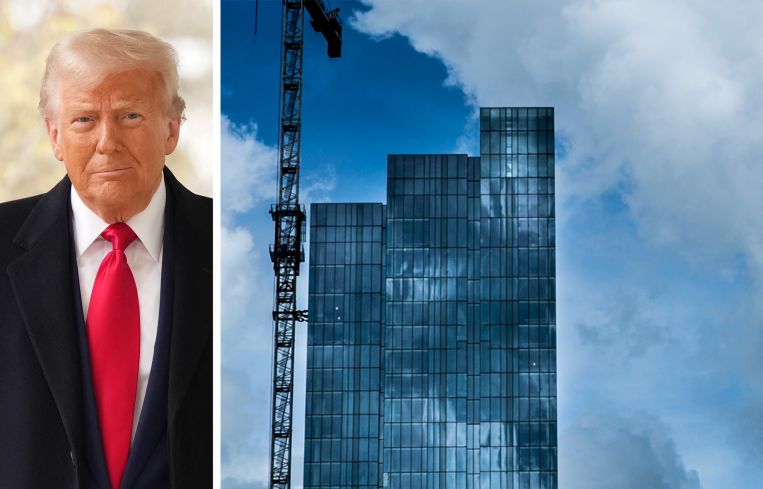Trump’s Latest Tariffs Already Being Felt by Commercial Real Estate
By Amanda Schiavo April 4, 2025 3:52 pm
reprints
So far President Donald Trump’s “Liberation Day” tariffs announcement has only liberated the stock market from trading in the green and freed the construction industry from having assurances on prices.
Wednesday night, Trump announced a 10 percent tariff on all imports to the United States and even steeper tariffs on specific countries, including China and the whole of the European Union. The next day, stocks tumbled on fears of significant price hikes and retaliation by other nations, and that freefall continued Friday as U.S. markets traded in the red.
Developers were already bracing themselves for the inevitable price hikes that come with tariffs, which are taxes paid by the importer, not the exporting country. The costs are typically made up by hiking the price of a product, meaning the consumer ultimately foots the bills, and the construction industry is already seeing higher materials costs with Trump’s latest trade salvo.
“We got a call last week from Kohler. They came to order a whole building by Wednesday,” Andrew Till, chief operating officer and principal at Baron Property Group, said Thursday at Commercial Observer’s South Florida Multifamily and Mixed-Use Forum in Miami. “On Friday, they were increasing prices.”
Another victim of the tariffs that went into effect in February has been glass, and now prices for windows, glass walls and similar products are expected to climb even higher.
“When the tariffs took effect last month, glass prices went up 10 percent,” Eli Moyal, founder of design-build company Chapter, told CO. “Now, with the new tariffs … we could see up to a 30 percent increase in glass prices.”
This could become a significant issue for office developers that use plenty of glass in developments, as glass-and-steel skyscrapers have become the preferred architectural choice in recent years.
“Usually with in-office [projects], one of the biggest expenses is glass,” Moyal said. “So, you could have a project that is 5,000 square feet of office space and that can have $150,000 to $200,000 worth of glass partitions that need to be installed, and that’s going to be affected by at least 20 percent.”
Avdoo & Partners Development founder and CEO Shlomi Avdoo told CO that his company gets most of its windows from Portugal and Turkey. Portugal, being a member of the EU, was hit with a 20 percent tariff by Trump on all goods coming out of its member countries.
“Portugal gets hammered the most,” Avdoo said. “I think they have a 10 percent base, and then there’s an additional 20 percent. So the question becomes: How does this 30 percent get split?
“[We’re] assuming that they’re going to put pressure abroad on the manufacturers, and then the vendors are going to put a little bit of pressure on their suppliers to try to see if they can cut some of the cost,” Avdoo added. “But I think a lot of it, a big portion of it, definitely shifts over to us.”
Trump’s policies have already introduced a fair bit of uncertainty to the real estate market. It’s now like a game of hot potato, with everyone wondering where the burden of these tariff-related increased costs will eventually land.
“It’s just all this uncertainty. No one knows if this is something that is going to be temporary,” Avdoo said. “We have a project that’s coming up, and ideally we’d order the windows now, but technically we can wait maybe two to three months. So do we wait two to three months and see what happens and let this thing settle? And then how do we negotiate our contracts?”
Avdoo said that earlier this week the company was in discussions with an overseas supplier of stone, and the first question Avdoo asked was, “If the tariffs hit, are you going to shift the costs over to us?” Avdoo said the vendor wasn’t sure how to answer his question.
“There’s a lot of uncertainty, and it definitely affects costs,” Avdoo said. “It could definitely be a situation where that cost is then shifted over — potentially — to the buyers to make up for it.”
With additional reporting by Julia Echkinson.
Amanda Schiavo can be reached at aschiavo@commercialobserver.com.


